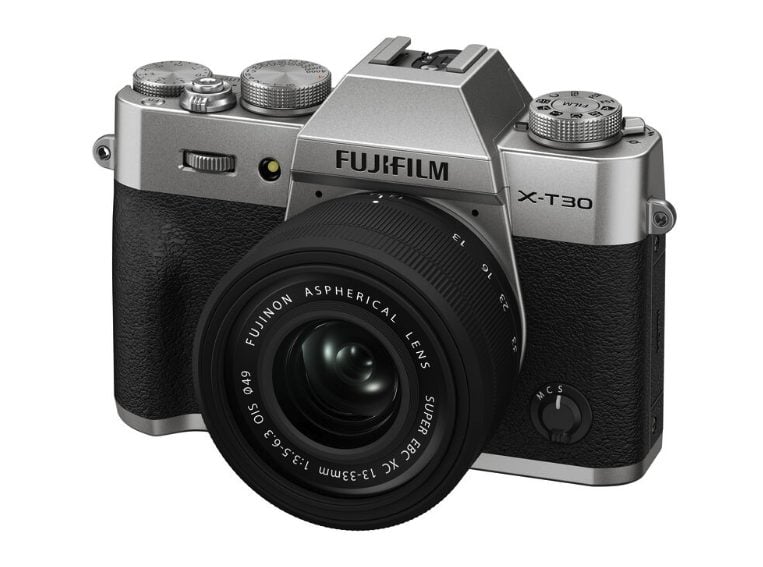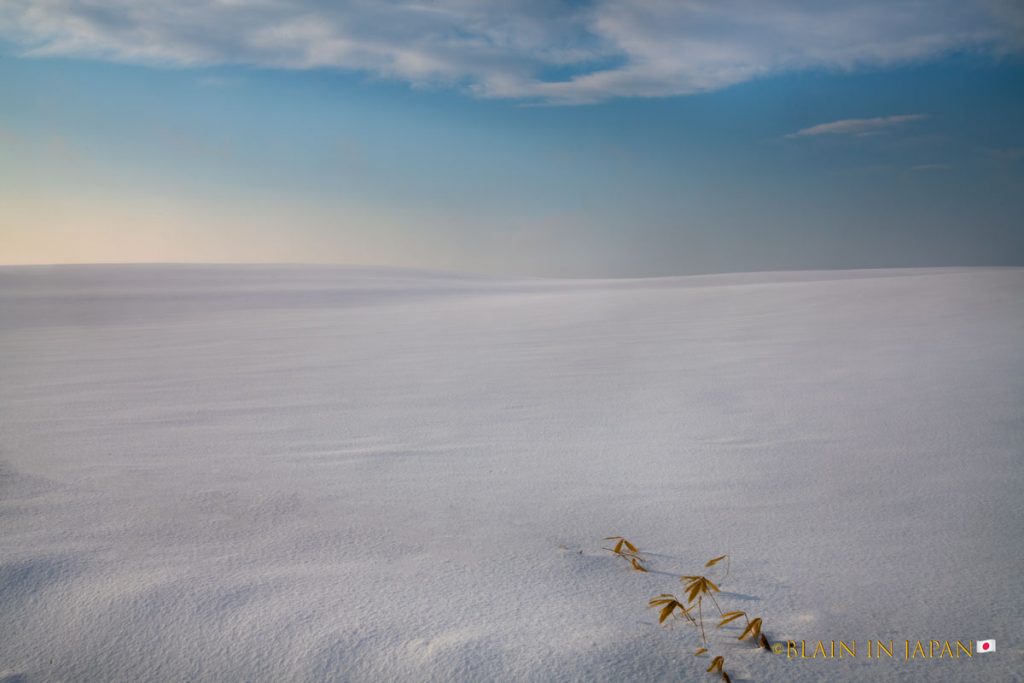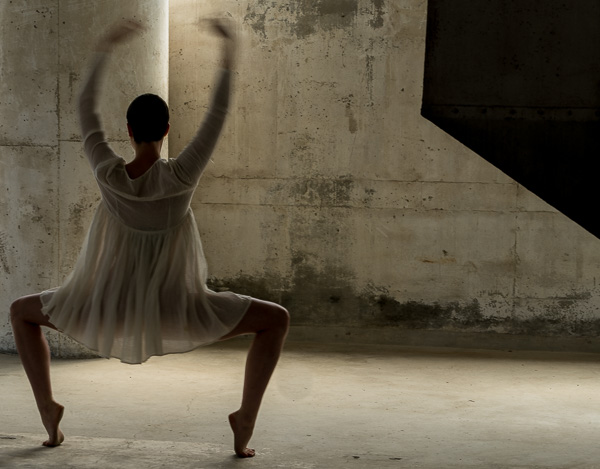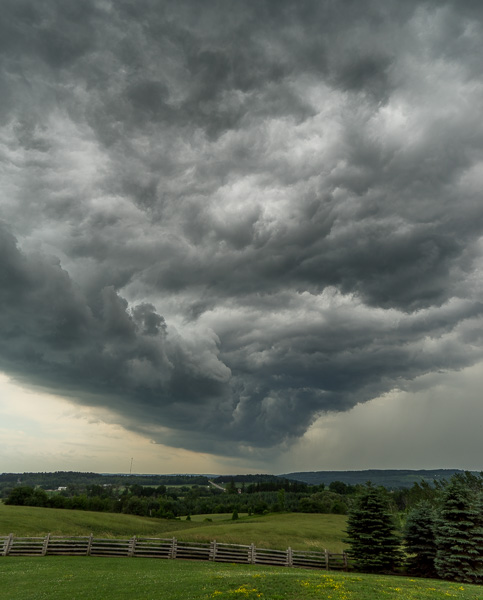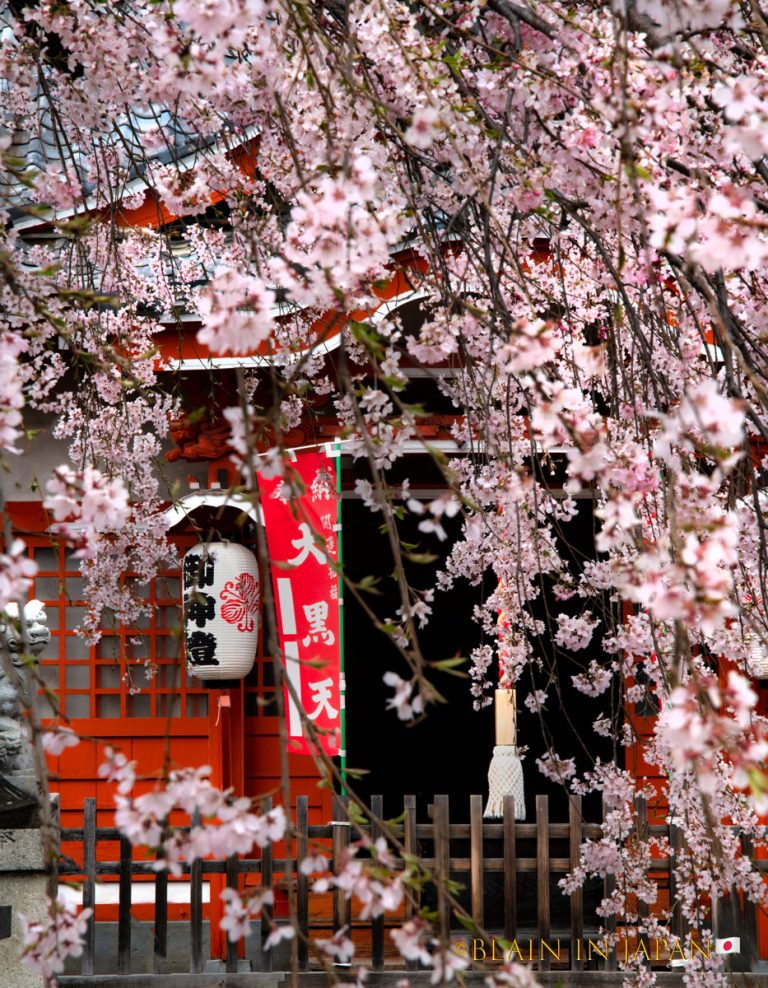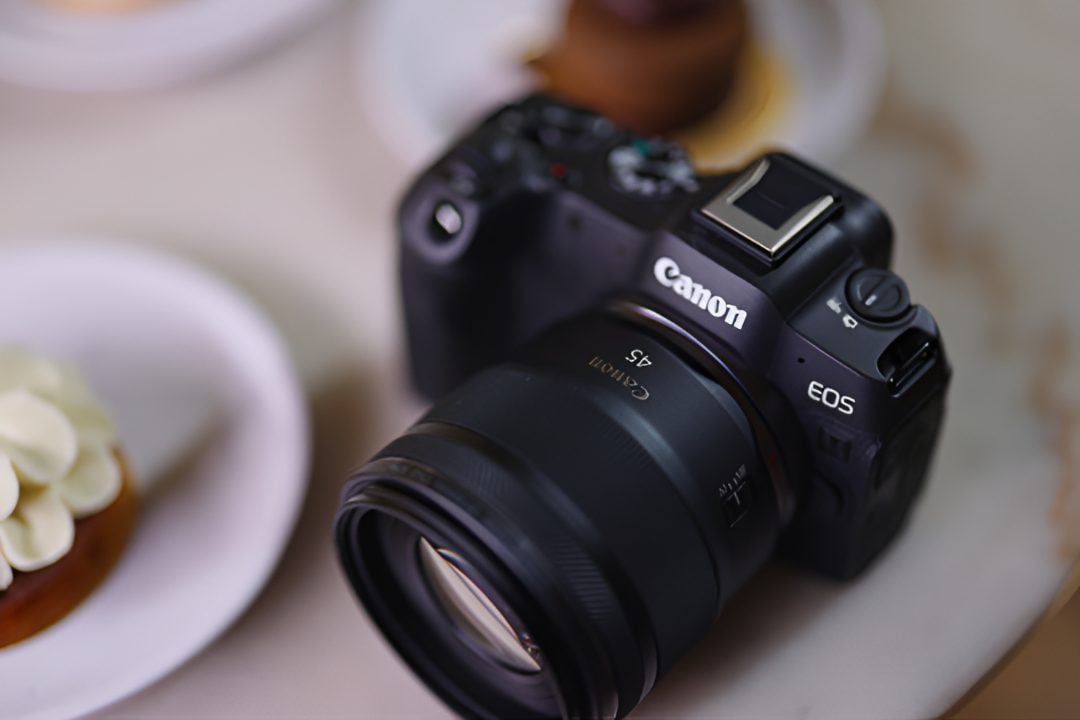Fujifilm just dropped something interesting into the already crowded APS-C mirrorless market, and honestly? I’m more excited than I expected to be. The X-T30 III lands in November 2025 at $999 for the body (or $1,149 with the new XC 13-33mm kit lens), and while it might look like a modest update on paper, there’s more happening here than the spec sheet suggests.
This is Fujifilm doing what they do best – taking proven technology, refining the experience, and wrapping it in a nice little package. At 378 grams (about 13.3 ounces), you can slip this thing into a jacket pocket with a pancake lens and forget it’s there until that perfect moment arrives.
What’s Under the Hood
Let’s talk about what’s powering this little machine. The X-T30 III pairs a 26.1-megapixel X-Trans CMOS 4 back-illuminated sensor with Fujifilm’s latest X-Processor 5 image processor. The processor doubles the speed of the previous generation. We’re talking about autofocus that keeps up with your subjects, faster shot-to-shot times, and the ability to handle 6.2K video without a problem.
The sensor itself delivers around 13.5 EV of dynamic range. What does that mean when you’re standing in a canyon at sunrise with deep shadows and a blazing sky? It means you’re bringing home usable detail in both. Fujifilm’s Dynamic Range expansion mode pushes that even further, up to 400%, which becomes really useful when you’re working in contrasty light.
Twenty-six megapixels gives you plenty of resolution for landscape work. I know we live in an era where more megapixels sounds better, but here’s the reality – a 26MP file from an APS-C sensor prints beautifully at 20×30 inches and gives you decent cropping latitude. The X-Trans color filter array (that’s Fujifilm’s unique sensor design) means you’re getting excellent detail without the moiré that can show up in traditional Bayer sensors.
Autofocus
This is where things get genuinely exciting. The X-Processor 5 brings Fujifilm’s latest AI-powered subject detection to the X-T30 III, and the list reads like a wildlife photographer’s wish list – animals, birds, cars, motorcycles, bicycles, airplanes, trains, insects, and drones.
The 425-point hybrid autofocus system covers a huge portion of the frame, which means you can compose with your subject anywhere and still expect sharp focus.
For continuous shooting, you’re looking at 8fps with the mechanical shutter, 20fps with the electronic shutter, and a wild 30fps if you’re willing to accept a 1.25x crop. That mechanical shutter speed might sound modest compared to some competitors pushing 15fps or higher, but 8fps should capture the decisive moments in most real-world scenarios. The electronic shutter at 20fps? That’s where things get interesting for photographing birds in flight or a rowdy soccer game.
The AI subject detection represents a massive leap forward from the X-T30 II. Fujifilm’s autofocus has historically been their Achilles’ heel, and while this still might trail Sony and Canon in terms of absolute stickiness, it’s now more reliable for moving subjects. That matters whether you’re tracking a hawk across the sky or trying to keep your hyperactive dog in focus.


The Film Simulation Dial
Here’s where Fujifilm separates itself from every other camera manufacturer. That new Film Simulation dial sitting on the top plate? It’s a wonderful shift in how you’ll work with this camera.
Twenty film simulations live in this camera, including favorites like Velvia (punchy, saturated landscapes), Classic Chrome (muted, documentary feel), and the newer additions like Reala Ace and Nostalgic Neg.
The real magic happens with those three customizable recipe positions. You can dial in your perfect look – maybe you want crushed blacks with lifted shadows and a green tint for that vintage film vibe – save it, and access it instantly with a twist of the dial.
For street photographers and anyone sharing photos directly to social media, this transforms your workflow. So, if you’re not shooting RAW and spending an hour in Lightroom…you’re creating images with your preferred in-camera looks. Twist the dial, shoot, share. The immediacy brings back some of the joy that got lost sometimes when digital photography becomes saddled with endless post-processing.
That physical dial makes experimentation effortless. Walking through a market? Try Nostalgic Neg. Hitting the trails at golden hour? Velvia might be your friend. The tactile nature of the dial encourages you to play in the field.
Video Capabilities Step Up
The jump to 6.2K/30p open gate recording represents a big upgrade from the X-T30 II’s 4K/30p limit. Open gate means you’re capturing the full sensor area, giving you flexibility to crop for different aspect ratios in post without losing resolution. Want to deliver in 16:9 for YouTube and 9:16 for Instagram Reels from the same footage? Open gate recording makes that possible.
You’re also getting 4K/60p for smooth motion and 1080p/240p for dramatic slow-motion sequences. The camera records internally in HEVC 4:2:2 10-bit, which translates to excellent color information and latitude for color grading.
The reality check here – there’s no in-body image stabilization (IBIS). The camera does offer digital image stabilization for video, but that comes with the usual trade-offs of slightly cropped framing and potential digital artifacts. The new XC 13-33mm kit lens includes optical stabilization (4 stops), which helps considerably. For video work, you’ll want to think about your stabilization strategy – whether that’s stabilized lenses, a gimbal, or solid handheld technique.
The 3.0-inch touchscreen tilts up and down, which works fine for waist-level shooting or getting low to the ground. The screen stays off to one side when you’re shooting vertical, which some photographers prefer because it keeps the camera balanced. Audio input requires a 2.5mm-to-3.5mm adapter for standard microphones, something to keep in mind if serious video is part of your workflow.
Physical Design and Handling
Measuring 118.4 x 82.8 x 46.8mm, the X-T30 III maintains Fujifilm’s commitment to compact, rangefinder-inspired design. That 378-gram weight includes the battery, meaning your complete shooting kit with the camera and kit lens comes in under a pound and a half. Compare that to full-frame setups that can easily hit three or four pounds with equivalent coverage.
The body features Fujifilm’s classic control layout – shutter speed dial on top, aperture ring on the lens, exposure compensation dial within easy reach of your thumb. There’s also an AUTO mode selector lever for times when you just want to hand the camera to someone and say “push this button.” The built-in pop-up flash pops up automatically when needed, providing convenient fill light without carrying an external unit. The flash portrait look is making a come back.
The electronic viewfinder packs 2.36 million dots, which delivers a clear, detailed view for composing and manual focusing. The touchscreen offers 1.62 million dots of resolution, plenty sharp for reviewing images and navigating menus.
The grip is shallow, which comes with the compact territory. With smaller lenses like the kit zoom or Fujifilm’s excellent prime lineup (the 23mm f/2, 35mm f/2, 50mm f/2), the camera balances beautifully in your hand. Mounting something like the 50-140mm f/2.8 might feel front-heavy, but that’s physics – you’re pairing a 378-gram body with a 2-pound lens.


Battery Life and Practical Considerations
Fujifilm rates the battery at 425 shots per charge in Economy Mode, up from approximately 380 shots on the X-T30 II. Real-world performance depends heavily on your shooting style. Heavy video use, constant viewfinder time, or extensive menu diving will drain batteries faster. Bringing a spare or two makes sense, especially for full-day adventures.
The camera uses UHS-I SD cards. While that’s not the blazing UHS-II speed some photographers want, it’s perfectly adequate for this camera’s write speeds and keeps media costs reasonable. A quality UHS-I card handles the burst shooting and 6.2K video recording without bottlenecks.
One thoughtful addition – Instax printing support with framing guides for mini, Square, and Wide formats. So… if you connect a compatible Instax printer you can create physical prints with proper framing right from the camera. It’s a small touch that extends Fujifilm’s film heritage into the digital arena.
Who This Camera Serves Best
The X-T30 III hits a sweet spot for several types of photographers, and understanding whether you’re in that sweet spot helps determine if this is your camera.
Landscape photographers working primarily from a tripod will find this camera delivers everything they need. That 13.5 EV dynamic range captures the full tonal spectrum from shadow to highlight. The 26-megapixel resolution provides ample detail for large prints. The compact size means you can carry it deeper into the backcountry without the weight penalty of larger systems. Pair this with Fujifilm’s XF 10-24mm f/4 OIS (equivalent to 15-36mm full-frame) and you have a legitimate landscape kit.
The lack of IBIS matters less when you’re on sticks. If you regularly shoot landscapes handheld – maybe you’re hiking at dusk and want to capture the fading light without setting up a tripod – you’ll want to consider whether stabilized lenses or slightly higher ISOs work for your style. Modern sensors handle ISO 1600 or 3200 remarkably well, especially when you’re shooting at smaller apertures for depth of field.
Street photographers will love this camera. The compact size keeps you inconspicuous. The physical dials let you adjust settings without looking at the camera. That film simulation dial means your images come out finished, ready to share. The improved autofocus tracking means you can capture spontaneous moments with confidence. The 23mm f/2 or 35mm f/2 primes create a street photography kit that fits in a small shoulder bag and attracts zero attention.
Travel and adventure photographers get a complete system that weighs a fraction of full-frame alternatives. The XC 13-33mm kit lens (20-50mm equivalent) covers a useful range for landscapes and environmental portraits. The new kit lens includes optical stabilization, which helps when you’re shooting handheld in cathedrals or at twilight. Add the 18-55mm f/2.8-4 or the 16-80mm f/4 for more reach, and you have incredible versatility without the bulk.
Enthusiast photographers stepping up from phones or entry-level cameras get manual controls, excellent image quality, and room to grow. The AUTO mode provides a safety net while you’re learning. The physical dials teach you the relationship between shutter speed, aperture, and ISO in a tactile way that makes the concepts stick. The film simulations let you explore creative looks without mastering complex editing software.
Social media creators and daily sharers benefit enormously from those film simulations and that dial. Your workflow becomes shoot, select, share. The JPEGs from this camera rival what most people achieve after extensive editing. If you’re posting to Instagram, creating content for a blog, or documenting life for family and friends, the X-T30 III delivers finished images that stand out from typical phone photography without demanding hours of post-processing.


When to Look Elsewhere
Photography is about matching tools to vision, and some photographers will be better served by different cameras.
If video is your primary focus, particularly professional video work, you’ll want more robust video features. The lack of IBIS, the tilting-only screen, and the adapter requirements for standard audio inputs create workflow friction. If you’re wanting to stay Fuji, the X-S20 (currently around $1,299) adds IBIS, a fully articulating screen, and improved video ergonomics for a few hundred dollars more. That investment makes sense if video is central to your work.
Sports and wildlife photographers pushing the limits of fast action photography might want the faster mechanical burst rates and deeper buffers of higher-end bodies. The Fujifilm X-H2S offers 40fps with blackout-free electronic shutter and a significantly larger buffer, which matters when you’re shooting birds in flight or fast-moving sports. The X-T30 III handles casual action photography beautifully, but professional sports shooters have different demands.
If you’re making prints larger than 30×45 inches regularly or crop heavily, the 40-megapixel sensor in the X-T50 or X-T5 provides more resolution headroom. The X-T50 ($1,399) adds that higher-resolution sensor plus 7-stop IBIS for $400 more than the X-T30 III. Whether that extra resolution and stabilization justifies the cost depends on your specific needs. Many landscape photographers find 26 megapixels plenty – Ansel Adams created masterpieces with 4×5 film that scanned to around 24 megapixels.
Weather sealing matters if you regularly shoot in rain, snow, or dusty conditions. The X-T30 III lacks the gaskets and seals that protect against moisture and dust. If you’re photographing in challenging environments frequently, the weather-sealed X-S20 or X-T5 might be worth the investment. For occasional outdoor photography with reasonable care, the X-T30 III handles normal conditions fine.
The Value Proposition
At $999, the X-T30 III delivers remarkable capability for the price. You’re getting the latest processor, AI autofocus, 6.2K video, 20 film simulations, and excellent image quality in a compact package. The new kit lens at $1,149 total represents strong value – the XC 13-33mm provides a useful focal range with optical stabilization, perfect for getting started.
Compare this to the X-T50 at $1,399. That camera offers the 40MP sensor and IBIS, genuine advantages for specific use cases. But the X-T30 III delivers 90% of the capability at 71% of the cost. For enthusiast photographers building their first serious camera kit, that $400 difference buys excellent glass – maybe the 23mm f/2 or 35mm f/2 primes that will elevate your photography more than extra megapixels.
Looking outside the Fujifilm ecosystem, the Canon EOS R10 competes at a similar price point (around $979). Canon offers weather sealing and arguably more reliable autofocus for sports and wildlife. But the R10 lacks Fujifilm’s film simulations, the intuitive physical controls, and that analog shooting experience that makes photography feel more engaging. The Sony A6400 (around $898) provides faster autofocus and unlimited 4K recording but feels more clinical, more focused on specifications than shooting experience.
The X-T30 III appeals to photographers who view their camera as a creative tool rather than just a specification sheet. The tactile nature of the controls, the immediate access to creative looks through film simulations, and the compact size that encourages you to bring the camera everywhere – these factors matter more in real-world photography than an extra 100 autofocus points or 2fps faster burst rate.


Building a Landscape Kit
If landscape photography is your focus, here’s how to build an effective kit around the X-T30 III.
The XC 13-33mm f/3.5-6.3 OIS kit lens provides a 20-50mm equivalent range with emphasis on the wide end. That optical stabilization helps for handheld shooting when you don’t want to set up a tripod. The lens is remarkably compact and light, maintaining the camera’s portability advantage.
The Fujifilm XF 10-24mm f/4 R OIS WR stands as the quintessential landscape lens in the X-mount system. That 15-36mm equivalent ultra-wide range captures expansive vistas. The constant f/4 aperture and optical stabilization provide flexibility. Weather sealing adds protection (even though the camera body lacks sealing, a weather-sealed lens still protects the front element and internal optics).
For more versatility, the XF 16-80mm f/4 R OIS WR (24-122mm equivalent) covers wide-angle through short telephoto in a single lens. That range handles sweeping landscapes, environmental portraits, and tighter compositions of landscape details. The constant f/4 aperture and weather sealing make this a professional-grade workhorse.
A good circular polarizer and graduated neutral density filters round out your landscape kit. The polarizer cuts reflections and enriches colors. Graduated ND filters help balance bright skies with darker foregrounds when even that 13.5 EV dynamic range reaches its limits.
With the body, 10-24mm lens, and a quality tripod, you have a legitimate landscape photography system weighing significantly less than full-frame alternatives. That weight savings matters on mile 8 of a 12-mile hike to a remote location.
Final Thoughts
The Fujifilm X-T30 III represents something increasingly rare in modern cameras – a thoughtful evolution rather than a revolutionary reimagining. Fujifilm took a proven formula, updated the processor and autofocus to current standards, enhanced video capabilities, and added that wonderful film simulation dial that transforms how you interact with creative looks.
This camera succeeds because it understands its mission. It’s not trying to be everything to everyone. It’s not competing for the professional sports photographer or the feature film cinematographer. It’s serving enthusiast photographers who want excellent image quality, intuitive controls, and a camera that inspires them to actually go shoot rather than sit home reading specifications.
The 26.1-megapixel sensor might not wow specification enthusiasts, but it delivers beautiful images with excellent dynamic range and Fujifilm’s renowned color science. The AI autofocus represents a substantial improvement that makes the camera reliable for moving subjects. The 6.2K video adds capability for creators who want flexibility. The compact size and light weight mean the camera comes with you instead of staying in the bag because it’s too much hassle to carry.
The film simulation dial deserves special mention because it changes your relationship with photography. Instead of shooting everything flat and dealing with it later, you’re making creative decisions in the moment. You’re seeing your finished image as you compose it. For photographers who grew up shooting film and choosing their stock based on the look they wanted, this feels natural. For photographers coming from phones and automatic filters, this provides creative control with immediate feedback.
At $999, the X-T30 III offers extraordinary value. You’re getting a camera that will grow with you as you develop your skills, that produces images you’ll be proud to share, and that makes the process of photography genuinely enjoyable. In an era where cameras increasingly feel like complicated gadgets, the X-T30 III feels like a tool made by photographers for photographers.
The camera lands in November 2025. If you’re an enthusiast photographer looking for a capable, portable system that emphasizes the joy of making images over the complexity of specifications, the X-T30 III deserves serious consideration. Pair it with quality glass, load up your favorite film simulations, and go make some photographs.
Note: This is a first look based on announced specifications and features. We’ll provide hands-on impressions and field testing once review units become available. As always, specifications matter less than how a camera performs in your hands doing your kind of photography.
Read this story and all the best stories on The Luminous Landscape
The author has made this story available to Luminous Landscape members only. Upgrade to get instant access to this story and other benefits available only to members.
Why choose us?
Luminous-Landscape is a membership site. Our website contains over 5300 articles on almost every topic, camera, lens and printer you can imagine. Our membership model is simple, just $2 a month ($24.00 USD a year). This $24 gains you access to a wealth of information including all our past and future video tutorials on such topics as Lightroom, Capture One, Printing, file management and dozens of interviews and travel videos.
- New Articles every few days
- All original content found nowhere else on the web
- No Pop Up Google Sense ads – Our advertisers are photo related
- Download/stream video to any device
- NEW videos monthly
- Top well-known photographer contributors
- Posts from industry leaders
- Speciality Photography Workshops
- Mobile device scalable
- Exclusive video interviews
- Special vendor offers for members
- Hands On Product reviews
- FREE – User Forum. One of the most read user forums on the internet
- Access to our community Buy and Sell pages; for members only.



